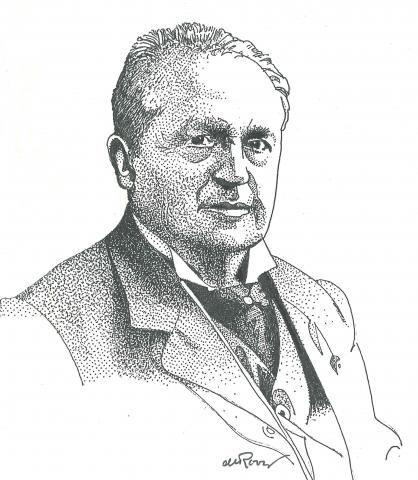A revised and updated version of
Abraham Kuyper: An Annotated Bibliography 1857-2010 by Tjitze Kuipers (2011)
You can buy a printed edition of this book on the site of the publisher.
1912
The publisher presented Kuyper with a hundred reproductions of paintings depicting biblical scenes from which he had to choose seventy-two. He then wrote short, expressive commentaries about the artist and the subject matter of each painting. A numbered folio inserted next to each reproduction displayed his observations on the artist’s work as well as his reflections on the underlying biblical passage. These sheets were printed on one side only and double columned with initials in red and black. At the top of each sheet, information is provided about the painter; at the bottom, the relevant biblical passage is reproduced. The collection includes works by twenty-five contemporary European artists. There are a total of forty-eight scenes from the Old Testament and twenty-four scenes from the New Testament (i.e., seventy-two reproductions in mezzotint [38cm.x51cm.] and seventy-two numbered pages of commentary).
For the preface see 1910.04.
The seventy-two reproductions selected by Kuyper had originally appeared together with twenty-eight other reproductions as illustrations in a luxurious three-volume edition (53cm.) of the Dutch Authorized Version published by Holkema & Warendorf in 1900. Initiators for that project had included some notable Dutch publishers (among them, very likely, Elsevier) and a number of art lovers. The illustrations had been engraved and printed in Paris by Lemercier and Co. (copyright, Lucien Layus, 1899), based on drawings expecially made by the selected artists (who were touted as “the most famous contemporary European masters”). However, the line with the names of the concerned artist, the engraver and printer, and the copyright owner is dropped from the bottom edges of the seventy-two reproductions that Elsevier put on the market with this edition de luxe.
On May 17, 1910, a copy of the precious Bible published by Holkema & Warendorf in 1900 was offered, in special leather bindings, as a birth present to Princess Juliana (*1909) from the Association of Christian Teachers in the Netherlands and the Overseas Territories. Then in 1912 a limited (binding) edition (250 copies) of the Bible was put on the market by the publisher as the Juliana-Bijbel (3 vols., half leather, ƒ250.-). Printed in gold in the center of the front cover, the title Juliana-Bijbel was surrounded by elaborate illustrations and decorations designed by C. André Vlaanderen (cf. 1907.13). Almost simultaneously with the release of the Juliana-Bijbel the Tafereelen uit de Heilige Schrift was completed and published.
In “Abraham Kuyper, de artiest” [Abraham Kuyper, the artist] (Bouw- en Interieurkunst, no. 64, April 1, 1932, the architectural supplement of De Standaard), the architect A. Ingwersen (1882–1959) wrote that “upon deeper reflection it appears that Kuyper was an artist, and in part from that state of mind, brought forth the things that still fill us with a sense of wonder.” In response to this observation, H.S.S. Kuyper wrote of Ingwersen: “You are the first to establish publicly that my father is more than ‘theologian,’ ‘politician,’ ‘journalist’ only, but in all these things an artist.” (Bouw- en Interieurkunst, no. 69, May 6, 1932).
According to the contract with the publisher (KA 316), Kuyper compiled this stately and expensive edition for a fee of ƒ2,500.

